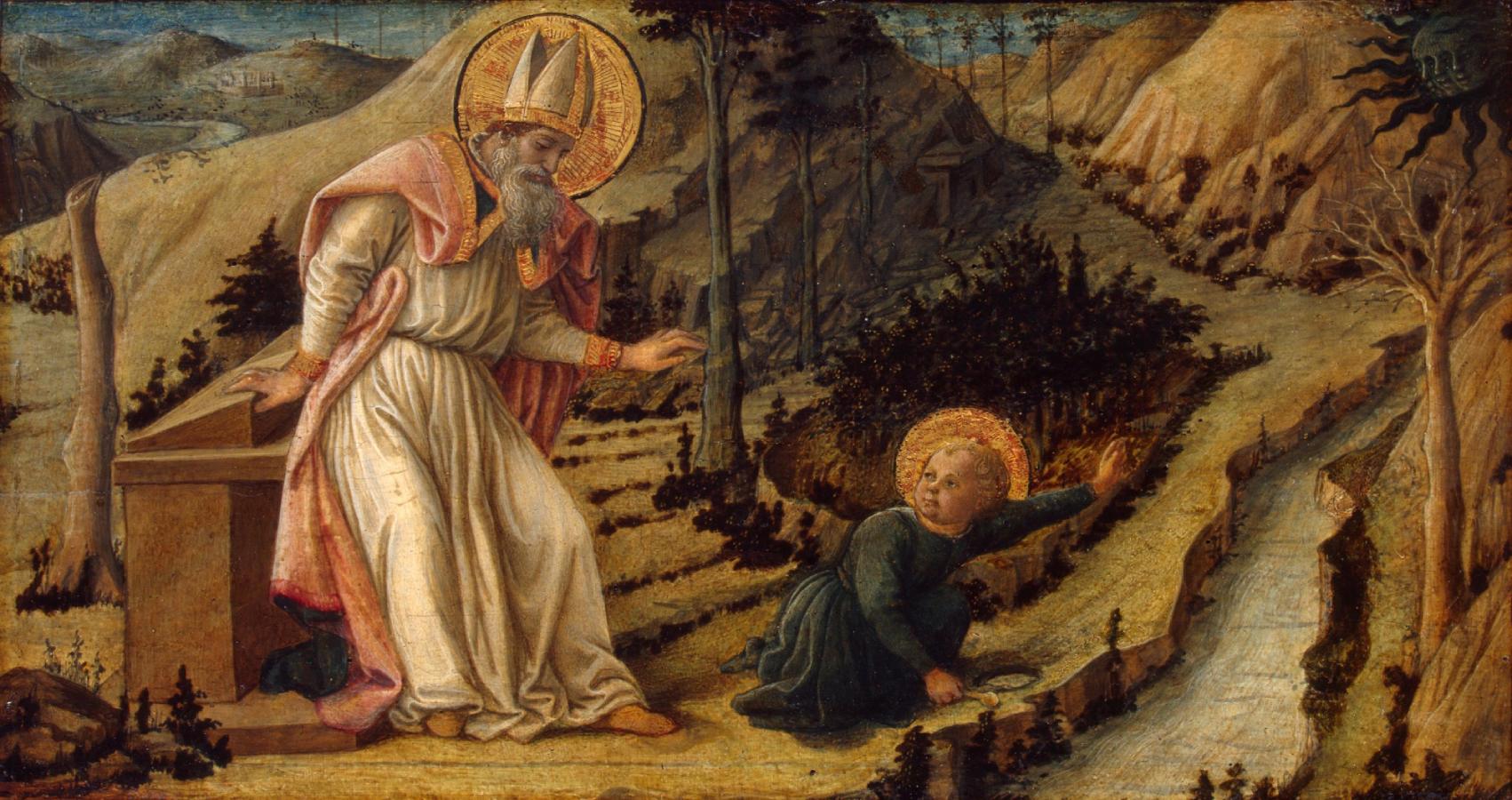Lippi, Filippo (1406-1469)
Visione di Sant’Agostino (Vision of St Augustine)
c.1460
Tempera on panel, 28 x 51.5 cm
Hermitage Museum, Saint Petersburg
Originally part of an altar, this work takes its subject from a description of the life of St Augustine, Bishop of Hippo and one of the Fathers of the Church. Augustine was trying to comprehend the dogma of the divine Trinity as he walked along the seashore when he saw a small boy removing water from the sea with a spoon and pouring it into a hole. When Augustine asked him the purpose of what he was doing, the child answered that any attempt by the human mind to comprehend the mystery of the nature of God was as vain and hopeless as seeking to remove all the water from the sea with a spoon. Having said this, he disappeared. Fra Filippo Lippi was possibly the first artist to take up this rare subject. He depicts the mystical event as a real scene taking place amongst the hills of his native Tuscany. Instead of the sea he showed a stream, and in the distance to the left we see the bend of a river and the towers of a small town. In the upper right corner is a three-faced sun, a symbol of the Trinity. The high horizon and the small hills and trees, as compared with the figures, testify to the artist’s mastering of the principles of linear perspective. (SHM)
See also:
• Augustine of Hippo (354-430)
